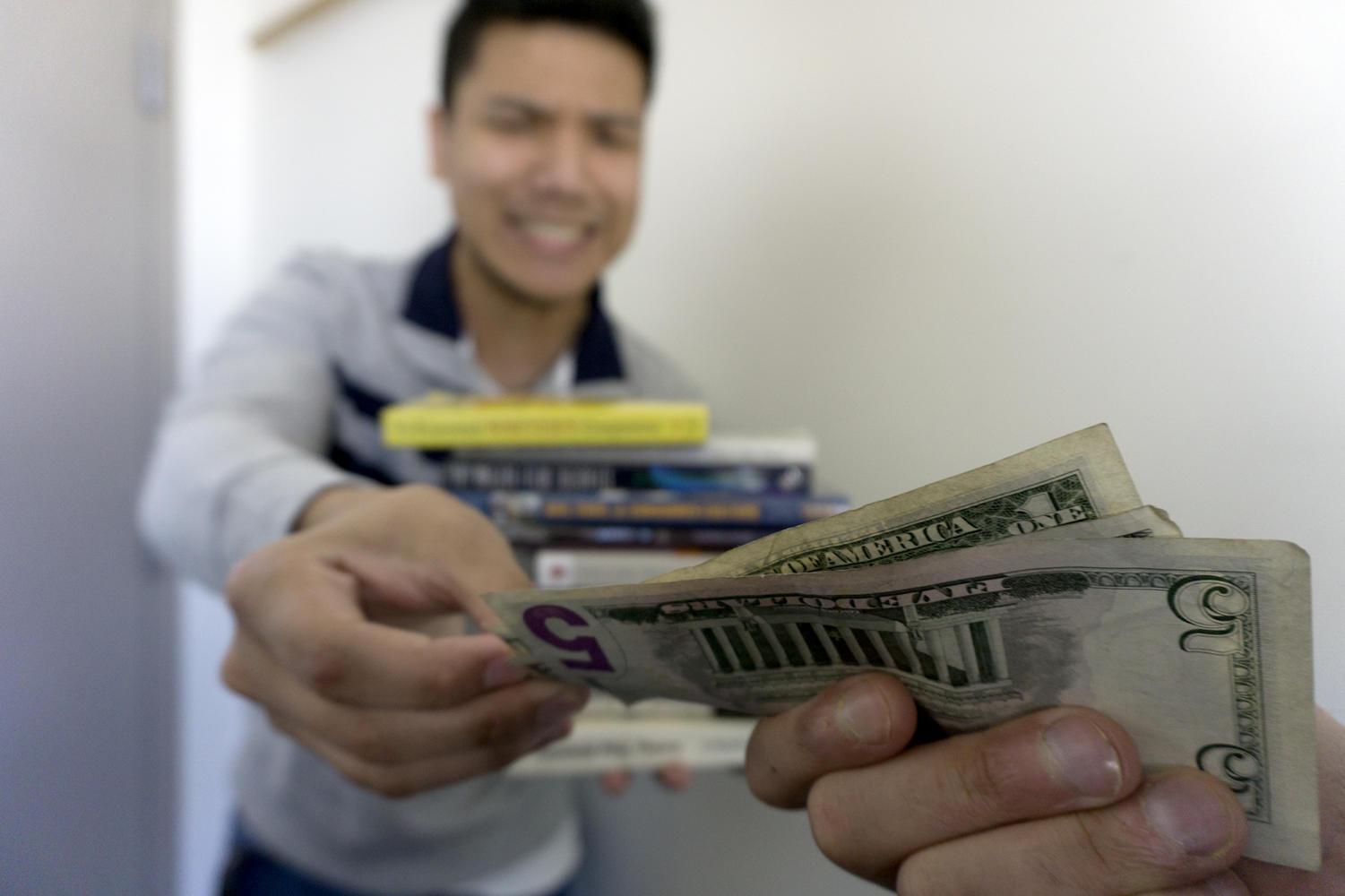When Perlie Yang began her junior year at Cal State Long Beach, she was required to buy a particularly expensive textbook — which was written by her professor.
Educators who write their own textbooks don’t garner the best reaction from students like Yang, who are required to buy their professor’s books — especially when the books are priced high.
“It kind of makes the teacher look like he’s taking advantage of his students,” said Yang, a junior economics major who paid $169 for an engineering book.
Students and faculty may be on different pages when it comes to paying for textbooks written by professors. At the sight of such a hefty price tag, students tend to automatically assume that these proceeds go to the authors. However, faculty members said that publishers control the price of books, and are the ones who receive the bulk of the proceeds, not the authors.
According to Douglas Domingo-Foraste, a professor of classics at the university, most professors write textbooks because they are unhappy with the coverage of the material in their subject. He also said professors receive minimal royalties from textbook sales.
“I have a book that is widely used around the country and about every five years or so I assign it as the text for our course Greek 405, Attic Orators,” Domingo-Foraste said. “It costs approximately $15. Every year from all the sales, I make about $50.”
Oumar Kamara, an international business senior, encountered the same professor as Yang and was required the $169 engineering textbook.
“I honestly thought it was ridiculous, especially because the book was way too expensive,” Kamara said. “Most importantly, he provided a [correction] sheet and expected us to catch the errors in it, so I didn’t buy the book.”
According to the university’s provost Brian Jersky, professors generally keep the royalties they receive from textbooks they write, after publishing costs. There is no ethical agreement or policy that professors sign before assigning one of their own books. However, textbooks are normally chosen by department faculty committees, rather than professors.
Domingo-Foraste also said that tenure could be a big motivation for professors to write their own books. However, if they were to self-publish online or assign their books to a class, it wouldn’t help them get tenure.
“Publishing a book with a reputable publisher would help one get tenure,” Domingo-Foraste said.
The Cal State Chancellor’s Office is currently developing a policy on “intellectual property” that will apply across the Cal State system, Jersky said.
The American Association of University Professors acknowledges that professors have the right to select their own material, but should consider quality, cost and availability.
“Because professors are encouraged to publish the results of their research, they should certainly be free to require their own students to read what they have written,” according to the association’s website.
The AAUP also calls upon faculty members to “avoid any exploitation of students,” and cites that several professional organizations have adopted policies to prevent professors from ethical dilemmas.
“The American Political Science Association, in its code of professional ethics, states that ‘teachers have an ethical obligation to choose materials for student use without respect to personal or collective gain,’” according to their website.
Glen Broom, a retired professor from San Diego State University wrote six editions of the textbook, “Effective Public Relations” over the past 28 years. According to Broom, this was the first textbook that made it possible for public relations to be taught at a university.
When assigning this book, which he said was considered “the bible of public relations,” Broom assured his students that he chose not to keep the royalties.
“On the first day of class, I announced that the book I assigned, which I am co-author of, is the leading textbook in the field and the only core book that I found that could fit what I thought was the right approach to PR,” Broom said. “I told the students to not worry that they’re paying me for the book because I return all royalties from San Diego State to the school’s [Public Relations Student Society of America].”
According to Broom, most textbook authors only receive five to 10 percent of the royalties, and the publisher keeps the rest. In some cases, professors may receive a grant from a publisher, such as Pearson, to write a book. In this case, the author may make contracts that keep them from receiving royalties until at least 5,000 copies are sold.
Domingo-Foraste said he tries to keep the cost of materials for his class under $100, and leaves a copy of his assigned books on reserve in the library for students to rent for free. However, he recognizes that if a full-time student is taking five classes that require $100 books, then cost of university materials still remains an issue.
“The fault lies with the publishers,” Domingo-Foraste said. “Old editions go out of print quickly and the publishers add stuff you don’t need, like color pictures, just to jack up the price.”
He also said that certain publishers have started to monopolize certain fields.
“We who teach beginning languages are almost forced to use Pearson,” Domingo-Foraste said. “I suppose it’s not Pearson’s fault we live under capitalism and it wants to maximize profit. But it can be irritating that the competition that is supposed to restrain prices doesn’t exist.”
Broom states that he has witnessed the price of textbooks go up frequently and consistently.
Representatives for Pearson did not provide comment despite repeated attempts.
An article by U.S. News and World Report stated that “the National Association of College Stores no longer receives information from the publishers about where textbook money goes,” but in 2008 they did provide a cost breakdown.
 Graphic created by Sarah Vehrs
Graphic created by Sarah Vehrs
Engineering Professor Reza Toossi said that he co-wrote a textbook that is being taught in over 20 other universities across the country. CSULB students get a 25 percent discount compared to students in other universities.
“The book is considered one of the best ever written on the subject, as being reviewed by numerous peers,” Toossi said. “The practice of professors using their own textbooks is universally accepted and encouraged everywhere. After all, why would a professor write a textbook if he or she wouldn’t think that this was the best resource for the students?”




